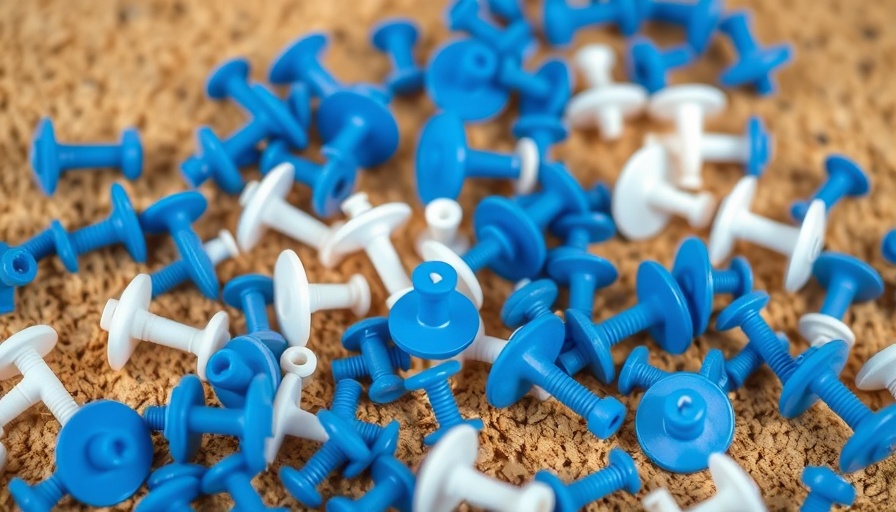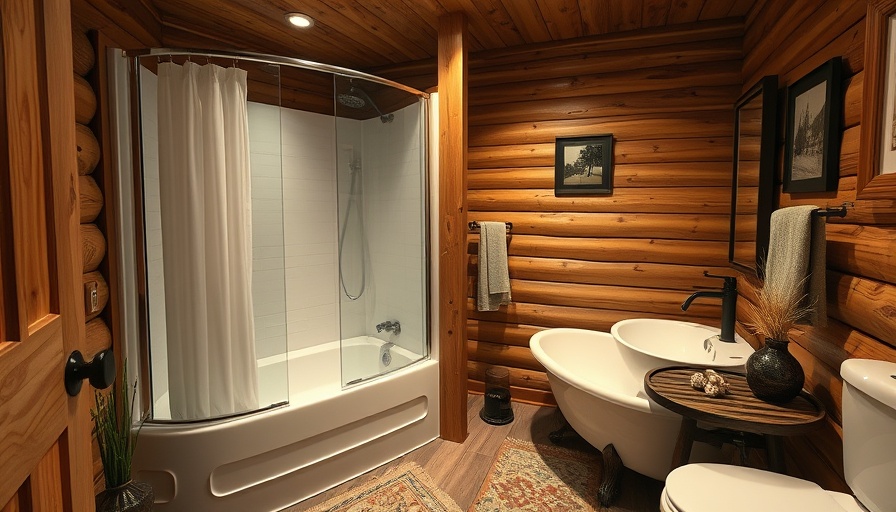
The Essential Guide to Choosing Drywall Anchors: Safety and Performance
When it comes to home improvement projects ranging from hanging art to securing shelves, the type of drywall anchor you use can make all the difference. In California’s diverse urban and suburban settings, where home styles vary greatly, understanding the nuances of drywall anchors is essential for any homeowner or DIY enthusiast. Choosing the right drywall anchor ensures safety while preventing damage to your walls—a skill that every homeowner should master.
Understanding Different Types of Drywall Anchors
There are several types of drywall anchors available, each designed for specific weights and applications. This diversity can make the choice a bit overwhelming, but with the right knowledge, you can ensure that your projects not only look good but also stand the test of time.
Plastic Expansion Anchors: Lightweight and Easy
Plastic expansion anchors are cylindrical with fluted ends and are perfect for light-duty tasks. They are typically rated to hold between 5 to 25 pounds depending on the size and type of drywall. When a screw is driven into a pre-drilled hole, these anchors expand to create a friction fit within the drywall.
While these anchors are inexpensive and easy to install, they do have their limitations. Over-tightening can crack them, reducing their holding power. Therefore, they should be used with care, primarily for less weighty items.
Molly Bolts: Versatile and Strong
Molly bolts are another step up, accommodating weights of 25 to 50 pounds. Their unique design includes a plastic or metal sleeve, which expands against the drywall's interior when tightened. This makes them suitable for medium-duty applications.
An excellent feature of molly bolts is that you can remove and replace the screw without losing the anchor itself, making them ideal for interchangeable pieces like picture frames and shelving units. However, installation too close to a stud can hinder their effectiveness, so be mindful during installation.
Threaded Drywall Anchors: The Self-Tapping Solution
For more demanding applications, threaded drywall anchors offer a robust solution, able to hold from 25 up to 75 pounds. Unlike others, these anchors screw directly into the drywall without needing a pre-drilled hole, thanks to their self-tapping design.
This ease of use and high capacity make threaded anchors incredibly popular. They provide a secure hold for heavier items like TVs—essential for homeowners looking to utilize their wall space effectively without compromising safety.
Evaluating Weight Requirements
When selecting a drywall anchor, it's crucial to consider the weight of the object you intend to hang. Experts recommend choosing an anchor rated for 25% to 50% more than the actual weight of the item. This precaution helps mitigate risks of failure.
For instance, if you're hanging a mirror weighing 10 pounds, opt for an anchor that can hold 12 to 15 pounds. This margin of safety proves invaluable in preventing mishaps—and protects your walls from unnecessary damage.
Common Misconceptions About Drywall Anchors
Many DIY enthusiasts believe that all drywall anchors are created equal. This misleading assumption can lead to inappropriate anchor usage, causing structural failures. It's essential to understand that each type has specific weight limits and ideal uses, which should be respected.
Additionally, some may think heavier-duty solutions are always necessary, leading to excessive drilling and wall damage. Instead, assess the weight and distribution of the item before deciding on the anchor type.
Practical Tips for Successful Installations
No homeowner wants to see their hard work come crashing down. Here are a few practical insights to keep in mind:
- Always utilize a stud finder to locate studs when possible, as securely fastening into wood is generally the best choice.
- Ensure the hole for the anchor is just right—not too big, and not too small to cause stress on the wall.
- Before final installation, always perform a test to ensure the anchor can hold the intended weight, especially after minor adjustments or repairs.
Future Trends in Home Anchoring Solutions
As technology advances, the landscape of home improvement evolves too. Expect to see anchors that feature easy-install mechanisms and smart technology integration in the future. For instance, some manufacturers are developing anchors that can report weight limits or notify homeowners of stress failures—highlighting the growing relationship between home technology and practical renovations.
Conclusion: Make Informed Choices for Your Home
As a California homeowner or potential buyer, being knowledgeable about the appropriate drywall anchors can ensure not just the aesthetic appeal but also the safety of your living space. Whether you’re in an urban apartment or suburban house, making informed, careful choices will empower you to tackle various projects competently.
Don't let drywall confusion compromise your home improvement efforts. Take the time to explore and understand your options, ensuring every piece you hang is not only beautiful but secure.
 Add Row
Add Row  Add
Add 




Write A Comment